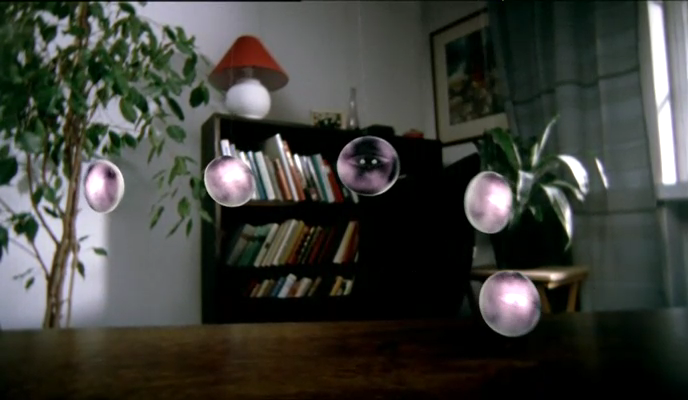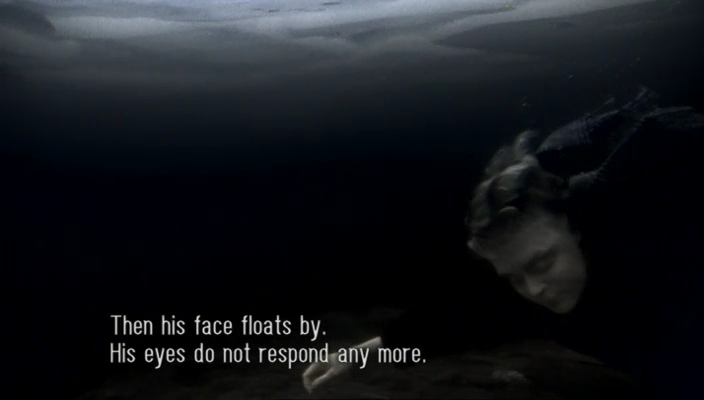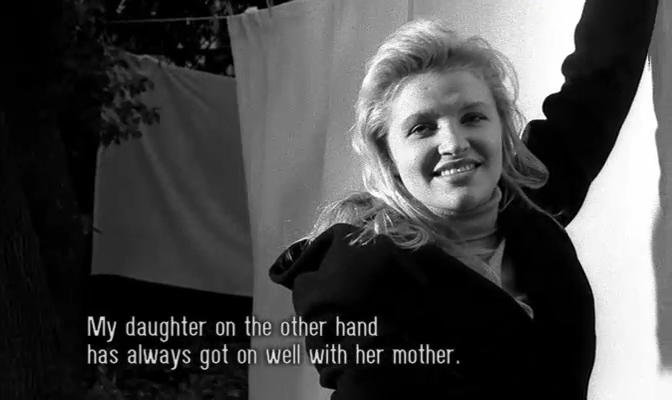Eija-Liisa Ahtila - The Cinematic Works of Eija-Liisa Ahtila (1993 - 2002)
Wednesday, November 14, 2007
 Despite the fact that Eija-Liisa Ahtila would most likely label herself an artist as opposed to a filmmaker and the situation whereby many of the titles present on this disc also exist as installation pieces, the collective term of “cinematic works” is undoubtedly apt. For Ahtila isn’t merely an artist slumming it in the world of filmmaking – as has been known in the past – but rather one who comes to the medium with a full understanding of its syntax and, more importantly, its powers. Certainly, her approach and thematic concerns mean that we shouldn’t necessarily deem her as someone who is making films for mainstream consumption, yet at the same time it is also true that her efforts don’t prove themselves entirely alien. After all, hers is a body of work told through audacious crane and dolly shots, special effects, and the kind of succinct editorial control we’d expect of a seasoned professional.
Despite the fact that Eija-Liisa Ahtila would most likely label herself an artist as opposed to a filmmaker and the situation whereby many of the titles present on this disc also exist as installation pieces, the collective term of “cinematic works” is undoubtedly apt. For Ahtila isn’t merely an artist slumming it in the world of filmmaking – as has been known in the past – but rather one who comes to the medium with a full understanding of its syntax and, more importantly, its powers. Certainly, her approach and thematic concerns mean that we shouldn’t necessarily deem her as someone who is making films for mainstream consumption, yet at the same time it is also true that her efforts don’t prove themselves entirely alien. After all, hers is a body of work told through audacious crane and dolly shots, special effects, and the kind of succinct editorial control we’d expect of a seasoned professional.
What’s particularly interesting about Ahtila is the fact that she’s built up this body of work – and a highly distinctive one – so soon. The Cinematic Works compiles seven efforts made between 1993 and 2002, and through these we are able to witness the same methods and concerns materialising again and again. Stylistically, she interweaves dense, often rapid fire, voice-overs into her highly cinematic style, the results being works which feel incredibly rich despite their brief durations. In thematic terms we find returning time and again to close knit units (families and couples) as well as the female experience, most notably that of adolescent girls. Indeed, it’s easy to tell that the maker of Me/We, Okay and Gray - the disc’s opening triptych – is the same as the one who produced Love is a Treasure, the set’s concluding offering. In fact, such are the ostensible similarities that each short could serve as a prequel/sequel to those which precede and follow it.
It’s an aspect which stands out most forcibly when we consider the individual films’ structure. The opening shorts are barely 90 seconds long; meanwhile Love is a Treasure extends to a comparatively epic 55 minutes. Yet Ahtila repeatedly divides her films into vignettes and episodes, thus creating a situation whereby even the longer pieces still effectively feel the same as those earliest efforts. If 6 Was 9, for example, takes a number of teenage girls and gives their own segment of the narrative. Likewise Today and Consolation Service, each of which is succinctly broken up into pieces which could be considered shorts in their own right. Of course, such a structure explains who each of these (excepting Love is a Treasure) was transposed into installation form; the only real difference is that on DVD we find the episodes presented in linear form.
Yet whilst Ahtila’s work easily creates its own distinctive world (in addition to elements already mentioned we also find a sober visual approach and a flirtation with the supernatural), some of the shorts do work better than others. If 6 Was 9 is the standout, and a sharp alternative to Tracy Emin’s Top Spot. Here we find five girls in their early teens from Helsinki discussing their lives and experiences thus far in a candid fashion whilst the screen – split into three – contrasts their words with a banal, yet very precise visual counterpoint. It’s worth noting that the film – and all of Ahtila’s work for that matter – is not a documentary, but it does draw heavily on interviews and research material which is then reconfigured into the mini-/meta-fictions. Love is a Treasure does much the same with schizophrenia whilst the rest of the disc’s films take on a similar approach. Indeed, this may very well hold the key to the success of Ahtila’s output to date: she cherry picks from various modes and expressions – the documentary film, the fiction film, cinema as a whole – and adopts them to her own distinctive means.


Share this via karagarga or thepiratebay.
at 10:37 AM